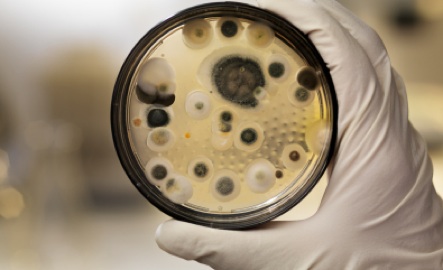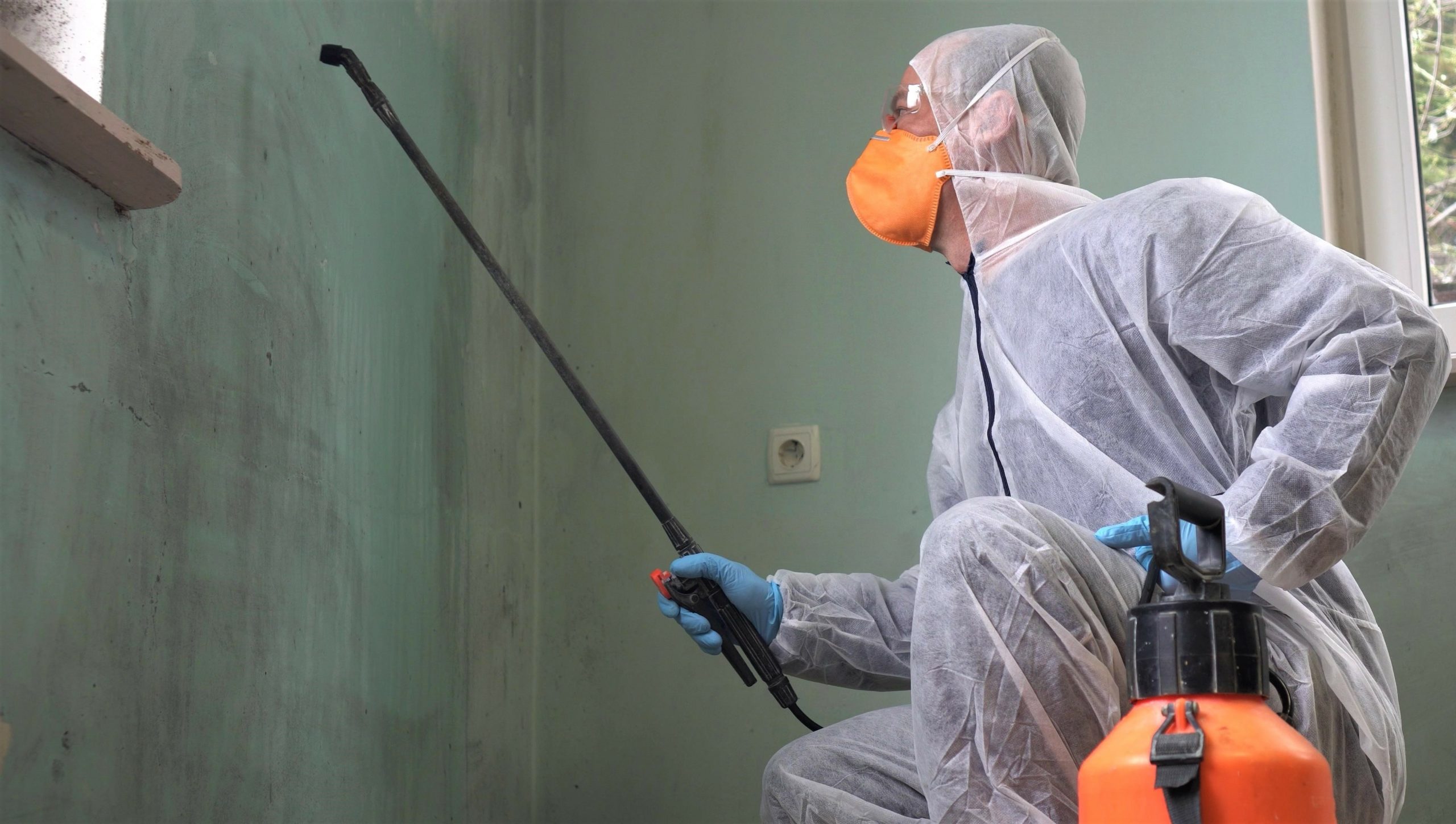The good news about potential health hazards around the house is that they are easy to uncover, and relatively inexpensive to correct.

By Kate Carter, DivineCaroline
You may have detected subtle hints that something might by awry: A persistent cough that seems related to the musty smell in your basement, the dastardly scent lingering on your hands after using the kitchen sponge, mysterious-looking paint flakes exposed deep beneath the top layer.
The good news about potential health hazards around the house is that they are easy to uncover, and relatively inexpensive to correct. And the mental benefits of being proactive about these dangers are abundant. No more sleepless nights, and no more wondering whether your child is bathing in water that flowed through lead pipes. These are some of the most common — and easiest to correct — household hazards that may be lingering in your home.
1. Kitchen Sponges
The sad truth is that unless you’re diligent about sanitizing them often, kitchen sponges often carry more germs than toilet seats. According to Kenneth Bock’s The Germ Survival Guide, sponges can harbor more than 100,000 bacteria, including food-borne diseases that you’ve wiped off the counter. You should (very regularly) toss them in the dishwasher, replace them, or zap them in the microwave for two minutes.
For more on sanitizing sponges and scrubbers, read Sponges and Scrubbing Pads.

2. Dirty Air Ducts
The need to clean air ducts may not be as obvious as the need to clean your bathroom, but it is at least as important. Dirty air ducts contain dust, pollen, bacteria, and even mold, and the contaminated air is recycled and circulated throughout your home, day after day. Check out the EPA’s information on selecting a service provider and preventing future air duct contamination.
3. Radon
A natural radioactive gas that you can’t see, smell, or taste, radon is the leading cause of lung cancer among non-smokers. The Environmental Protection Agency’s Web site has useful information about the risks of radon and where it is commonly found. You can purchase a do-it-yourself radon test at a home improvement store and get the results in a matter of days. Homes in certain parts of the country, and those with dirt basements, are particularly susceptible to the gas. Read more about radon and how to Cancer-Proof Your House.

4. Bisphenol-A
In a major study, leading scientific experts warned of adverse health effects from bisphenol-A (BPA), a chemical found in water bottles, cups, baby bottles, tin cans, and many other commonly used household products. Though the findings have been controversial — the American Chemistry Council maintains BPA is safe in low quantities — there has been a groundswell of effort to offer BPA-free products and, in some states, to ban BPA altogether.
BPA is a hormone-mimicking chemical used in polycarbonate plastics (they often have a #7 recycling code), and in animal tests, it has caused problems ranging from an increase in the incidence of prostate and breast cancer, to early onset of puberty in girls, to diabetes and obesity.
For more information about bisphenol-A, see Stop Eating BPA.
5. Lead
Lead is another invisible threat in your home, and one that’s easy to discover. It is a potent neurotoxin that can affect the brain and result in a lower IQ, memory problems, and increased aggression, and can be found in old paint, pipes, and even soil. You can have your home tested for lead by a professional, or you can purchase a lead test kit and swab surfaces for evidence of the chemical. If there is exposed lead paint, a fresh layer of non-lead paint on top is usually sufficient. If your home has lead pipes, those will need to be updated.

6. Mold
Basements are often the culprits of mold spores, which can produce allergens, irritants, and in some cases, potentially harmful toxins. Black mold is an especially dangerous type of mold. If you discover mold in your house (or suspect it could be in your house), you should promptly clean it up and fix the water problem that is causing the mold.
See Three Ways to Kill Mold Naturally.
7. Rats
Let’s face it — even the fanciest houses have gone to war with rats. Rats don’t seem to discriminate, and we’re all at risk for their bone-chilling presence. Not only can they eat through electrical wires in attics and cause fires, they are carriers of parasites and diseases, including tuberculosis, salmonella, Weil’s disease, and E.coli. If you suspect you might have rats, call a pest removal service and have them patch any entry points on your house that could be exploited by the rodents.
Love rats? Read Rats as Heros?

8. Cockroaches
While we’re talking about creepy crawlers, we can’t forget cockroaches, which love warm and humid locales. They carry a range of bacteria, including salmonella, staphylococcus, and streptococcus. You may need professional help to rid your house of roaches (and in some regions of the country, like where I live in the South, this is an uphill battle), or you can try to do it yourself. The Better Health Channel has some good tips for treating your house: empty the kitchen trash can regularly; don’t stack newspapers, cardboard boxes, or magazines inside the house; do not leave pet food out; repair any holes in the walls; and use physical traps, such as greased margarine tubs with a smear of honey to lure and then contain the roaches.
For great pest-friendly pest control tips, see Get Rid of Pests Naturally.
9. Knob and Tube Wiring
When I moved into my Atlanta bungalow built in 1925, I discovered that a portion of the house was powered by knob and tube wiring — a very common, yet dangerous set-up in older houses. Knob and tube wiring was used until about 50 years ago, and it consists of insulated copper conductors passing through insulating tubes and supported by porcelain knobs. It can be difficult to purchase homeowner’s insurance if you have knob and tube wiring, because it poses a much greater fire hazard. Call an electrician for help modernizing your wiring.

10. Aluminum Cookware
According to medical journalist Morton Walker, co-author of Toxic Metal Syndrome: How Metal Poisonings Can Affect Your Brain, aluminum found in pots and pans can leach into your food, and when ingested, can damage your kidneys and liver, and weaken your bones. A growing number of researchers say the metal could cause Alzheimer’s disease. Glass, cast iron, stainless steel, and porcelain cookware are good alternatives to aluminum.
For more on cookware, see Dangers of Cookware, Safe Alternatives.

11. Bed Linens
Sheets that have permanent-press finishes — commonly used by manufacturers in order to minimize wrinkling — typically contain formaldehyde, a known carcinogen. According to The Green Guide Product Report, formaldehyde becomes a gas at room temperature, and new or unwashed sheets can release formaldehyde fumes, causing flu-like symptoms. Since you spend so much time in bed, consider staying away from permanent press fabrics, and potentially buying organic cotton sheets. Or try supple and sustainable,bamboo sheets.
So before you wash your dishes with those musty sponges or rest your head on formaldehyde-soaked permanent-press sheets, remember these easy and inexpensive methods of correcting the dangers lurking in your home. Your unexplained cough and nagging worries may be quieted.
Originally Published at Yahoo!Green on July 6, 2011






